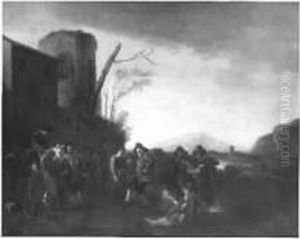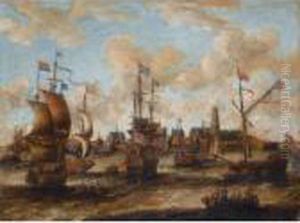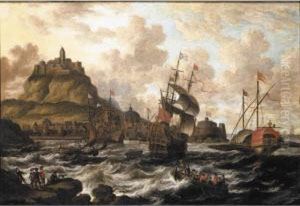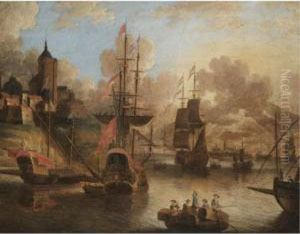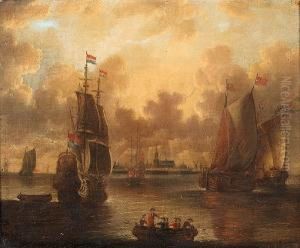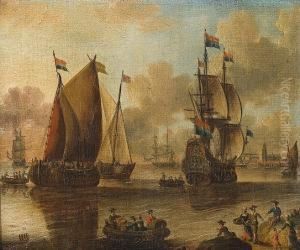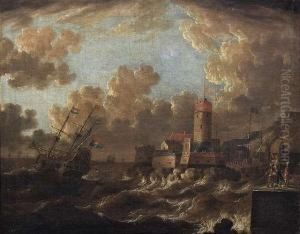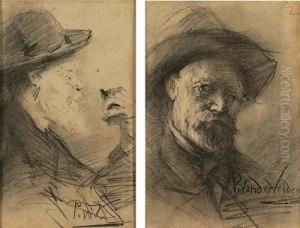Pieter Van Den Velden Paintings
Pieter van den Velden, also known as Petrus van der Velden, was a Dutch painter born on May 5, 1837, in Rotterdam, the Netherlands. He is not to be confused with the more contemporary New Zealand artist of the same name. Van den Velden's artistic journey began in his homeland, where he received his initial training and developed his skills.
In the initial phase of his career, van den Velden primarily worked on genre scenes, portraits, and religious subjects. His early works were influenced by the Dutch artistic traditions of the 17th century, reflecting the detailed and realistic style of the Dutch Golden Age. He also showed a keen interest in the effects of light and shadow, characteristics that would later become hallmarks of his mature style.
Later on, Van den Velden's work started to evolve as he became interested in the Barbizon school, a French art movement that emphasized naturalism and plein-air painting. This influence is evident in his landscapes, where he depicted the rustic countryside with a sensitive eye for the changing qualities of light and atmosphere. The Barbizon school's emphasis on the emotional content of landscapes also resonated with van den Velden, leading him to create works that were evocative and mood-driven.
Van den Velden spent most of his life in the Netherlands but was also active in other parts of Europe. Despite his prolific career, he did not gain the same level of fame as some of his contemporaries, and his work was often overshadowed by other Dutch artists of the 19th century. Nevertheless, he was respected by his peers and collected a modest following for his sincere and earnest depictions of the natural world and human subjects.
Pieter van den Velden passed away on November 14, 1913, leaving behind a body of work that, while not widely recognized, contributes to the rich tapestry of Dutch art history. Today, his paintings can be found in various European art collections, appreciated for their quiet beauty and emotional depth.
